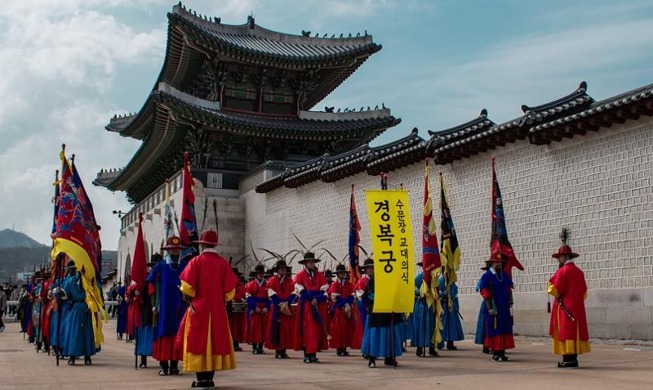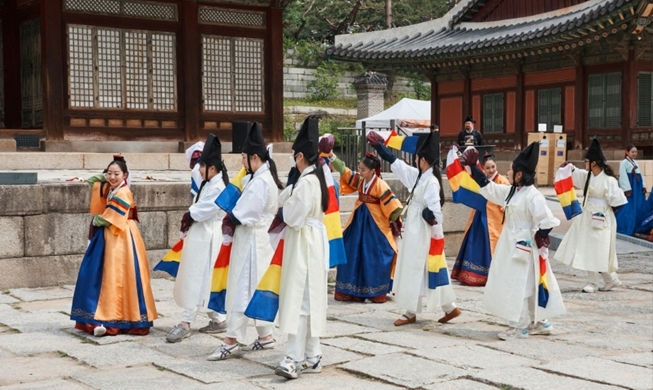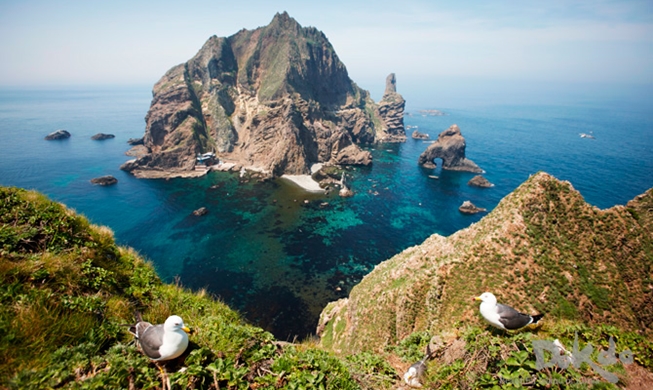-
 Korea.net's 24-hour YouTube channel
Korea.net's 24-hour YouTube channel- NEWS FOCUS
- ABOUT KOREA
- EVENTS
- RESOURCES
- GOVERNMENT
- ABOUT US
In the early 15th century, artists of the Joseon Dynasty (1392-1910) brought the craftwork home and started to produce blue and white porcelain in Korea.
Unlike white porcelain, which was popular during those times, the blue and white porcelain was solely the property of the royal family. The cobalt blue pigment used to paint the works of art was mainly produced in Persia, and importing the dye through China and into Korea was prohibitively expensive, making cobalt more expensive than gold at the time.
Also, since only the best painters of the time were allowed to paint designs on such treasures, the results captured well the dignity and lofty taste of the Joseon era royal court.
Underway now, there is a special exhibition in Seoul that brings to light the exclusive beauty of such blue and white porcelain, as well as offers a glimpse into how the craftwork has developed and has been applied to modern art forms.
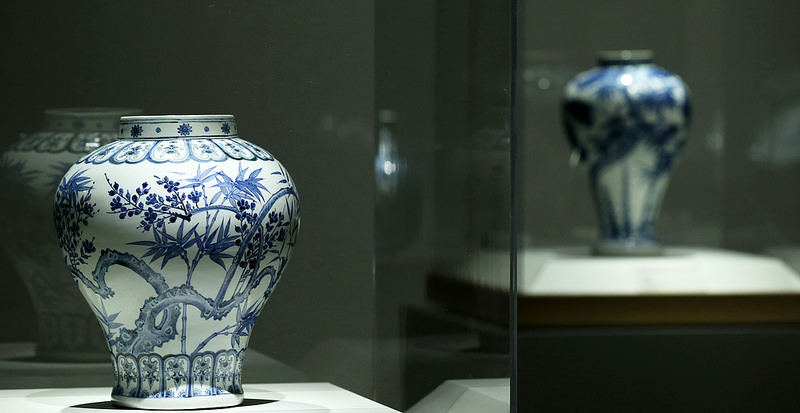
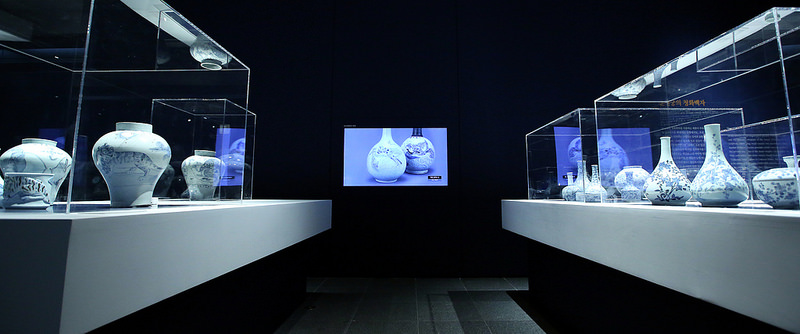
The special exhibition at the National Museum of Korea, "In Blue and White: Porcelains of the Joseon Dynasty," showcases an array of blue and white porcelain dating from the Joseon Dynasty.
“In Blue and White: Porcelains of the Joseon Dynasty” kicked off at the National Museum of Korea on September 30 and it features under the spotlight an array of the era’s blue and white porcelain.
The exhibition consists of five parts: Blue and White Porcelain of the Joseon Dynasty; Prestige and Power of the Royal Court; Treasure of the Literati; Utensils for Everyday Life; and, lastly, Living Aesthetics of Blue and White Porcelain.
The five-part structure explains in detail the way in which the treasures became part of life among the literati in the 18th century and then among commoners in the 19th century, after centuries of being the exclusive property of the royal family.
“You can see how blue and white porcelain was embedded deeply across everyday life in the latter part of the Joseon era, as they were manufactured into wash basins and other daily items. That was something no one would have dared imagine in earlier times,” said curator Lim Jin-ah.
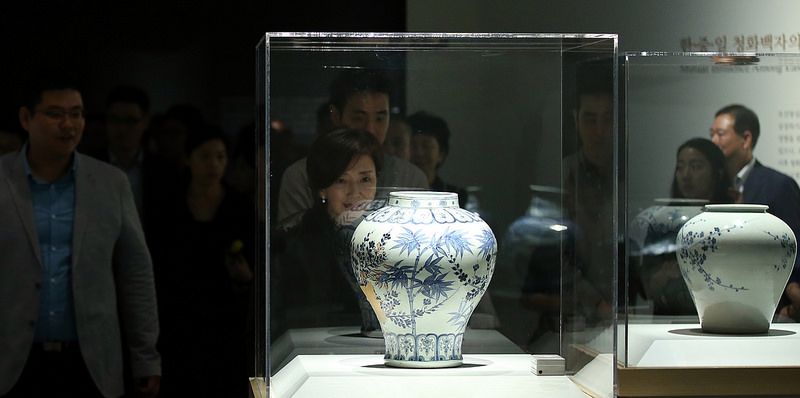
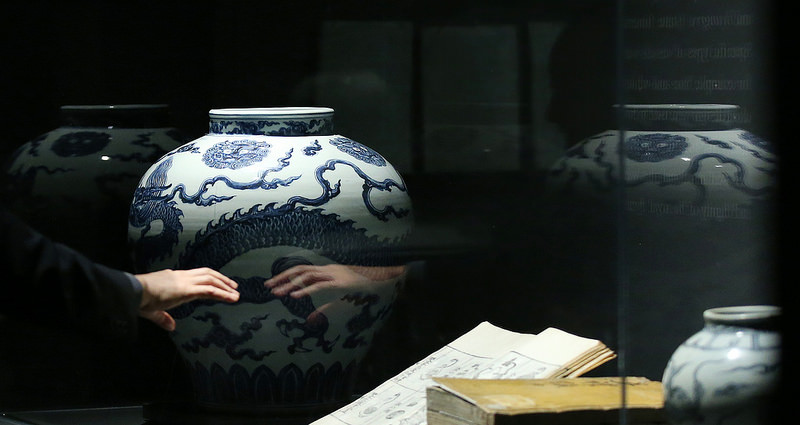
Visitors admire a collection of blue and white porcelain from the Joseon Dynasty at a special exhibition being held at the National Museum of Korea.
Among the items on display here include a jar decorated with apricot flowers and birds in blue, the oldest blue and white porcelain item in existence. It is known as the “Blue-and-White Epitaph Tablets of Princess Consort Heungnyeong." There is also a dragon-pattered vase used to hold flowers or else alcohol on the occasion of a royal feast.
Catching the eyes of museum-goers, there is also a gourd-shaped jar adorned with flowers and an octahedral piece painted with a Chinese landscape.
There are also works that reflect the taste of the dynasty's literati. They feature landscapes and portraits of both humans and animals, as well as plants and orchids. The porcelains produced in the latter part of the dynasty are designed to pray for “longevity” and “luck,” as they feature the Sipjangsaeng motif, the ten traditional symbols of longevity.
Museum-goers can compare the items on display with craftworks from China and Japan, too, as many beautiful Chinese porcelains and their modern Japanese siblings are on display, as well.
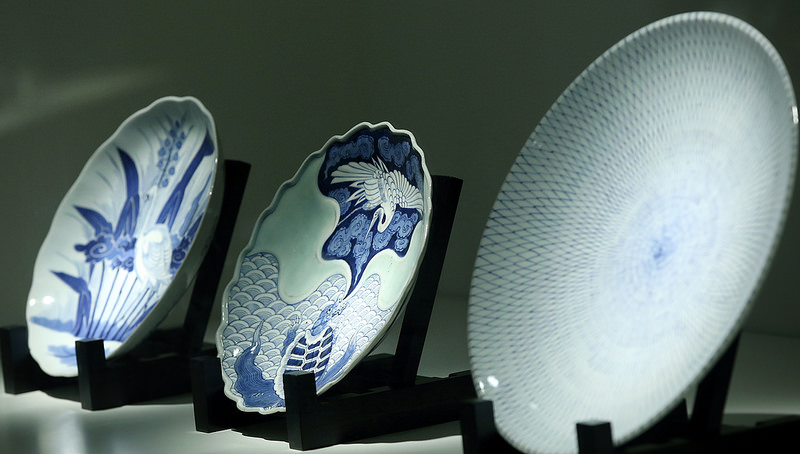
Porcelain plates made of blue and white are on exhibit at the “In Blue and White: Porcelains of the Joseon Dynasty” exhibition at the National Museum of Korea.
What distinguishes Joseon porcelain from its Chinese and Japanese counterparts is its “beauty of space.” The Joseon pieces are characterized by restrained beauty, leaving some space between the patterns. There are some subtle differences in the color of the white background, too, and also of the blue tints used to paint the patterns.
The exhibition will continue until November 16.

The “In Blue and White: Porcelains of the Joseon Dynasty” exhibition is underway at the National Museum of Korea.
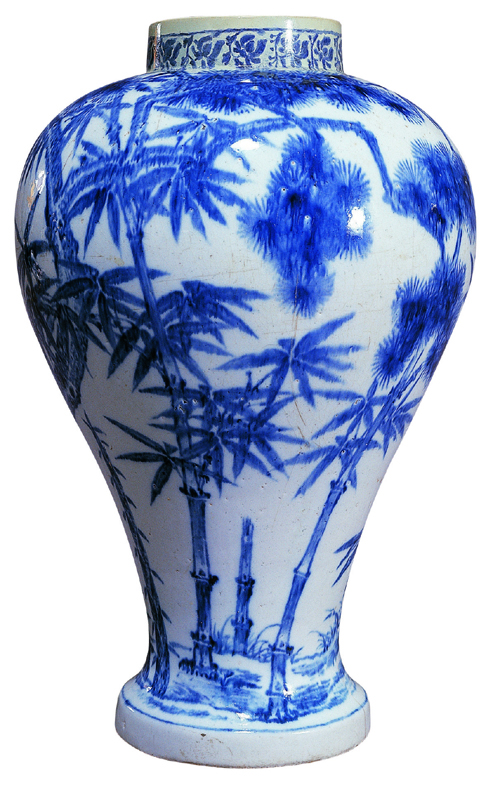
A pot with pine trees and bamboo is the oldest blue-and-white porcelain vase known to exist. It dates from 1489, during the Joseon Dynasty.
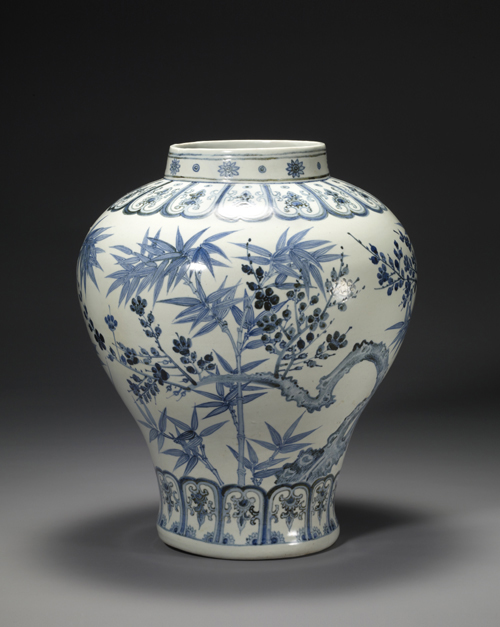
A jar designed with apricot flowers and bamboo comes from the 15th century Joseon Dynasty.
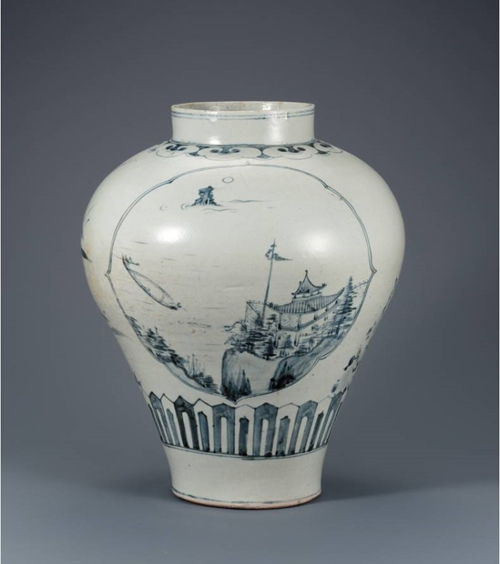
An 18th century blue-and-white jar is decorated with a sosangpalkyungdo landscape painting, capturing the beauty of ancient China.
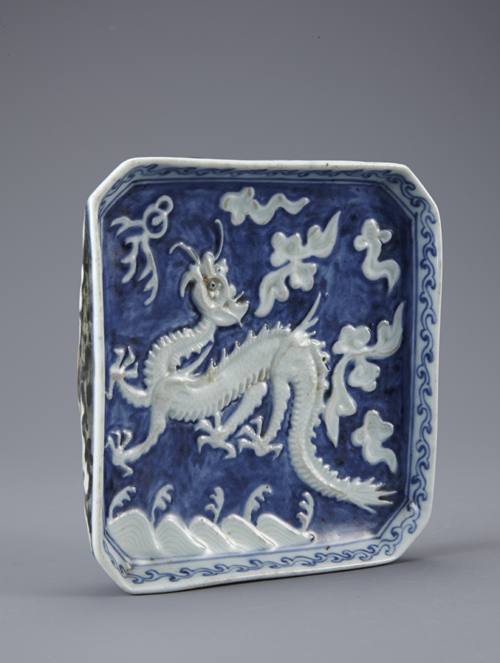
A plate with a dragon motif is from the 19th century Joseon era.
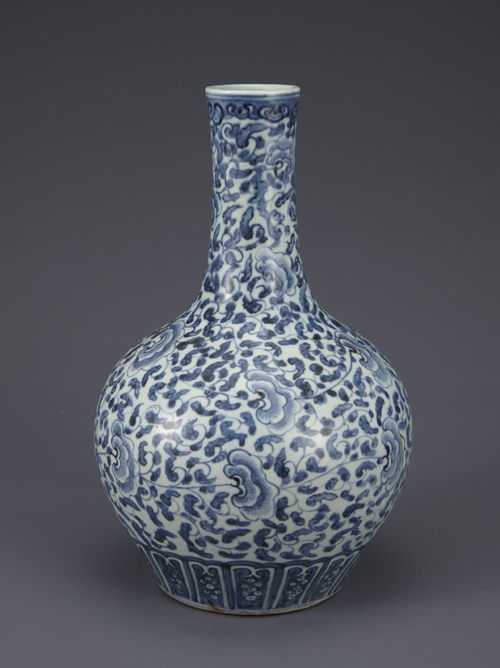
A jar decorated with vines dates from the 19th century Joseon era.
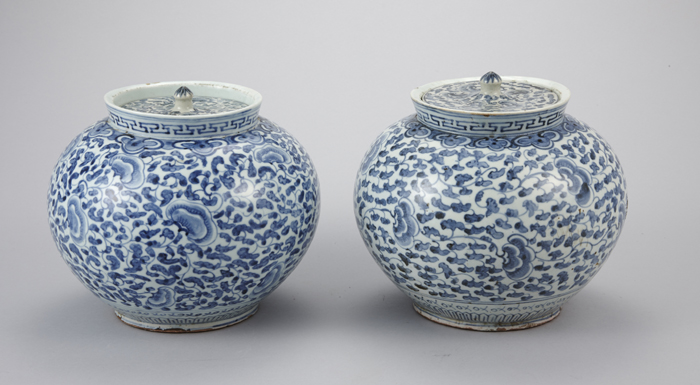
A pair of pots from the 19th century Joseon Dynasty.
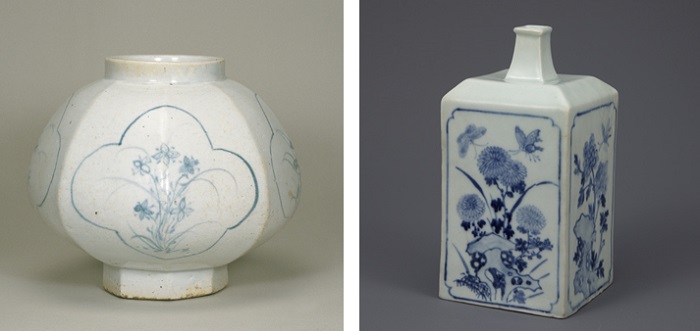
Blue-and-white porcelain jars from the 18th and 19th centuries feature pictures of wild flowers (left) and flowers, stones and butterflies.
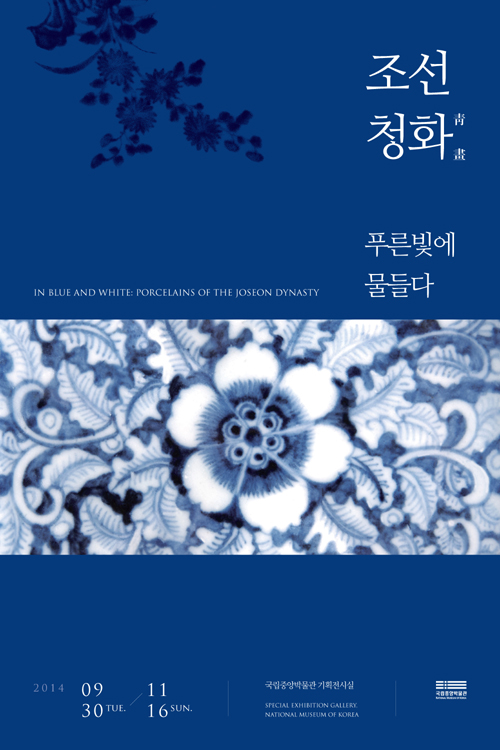
The official poster for “In Blue and White: Porcelains of the Joseon Dynasty” running at the National Museum of Korea until November 16.
By Sohn JiAe
Photos: Jeon Han, the National Museum of Korea
jiae5853@korea.kr




